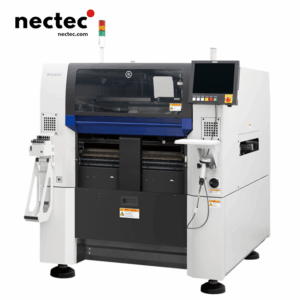In the fast-paced world of electronics manufacturing, the increasing demand for precision, speed, and efficiency has driven the evolution of pick and place technology in PCB (Printed Circuit Board) assembly. This remarkable advancement has transformed traditional soldering methods, paving the way for the assembly of more complex modern devices.
Pick and Place-technologie begrijpen
Pick and place machines are automated devices that play a crucial role in the assembly of PCBs. They utilize robotic arms to select and position electronic components onto the PCB with incredible accuracy. The process begins with a solder paste application, which is often done using stencil printing or a dispensing machine. After the paste is applied, the pick and place machine precisely picks each component from a reel or tray and places it according to the board’s layout.
The Soldering Process: A Closer Look
Once components are placed on the PCB, the soldering process begins. Traditionally, hand soldering was the primary method of joining components to PCBs, requiring skilled labor and ensuring high-quality results at a slow pace. However, with the advent of pick and place technology, soldering has evolved into a more efficient process, often utilizing techniques such as:
Reflow-solderen
Reflow soldering is the most common technique used in conjunction with pick and place assembly. After the components are placed, the PCB is heated in a reflow oven. The heat melts the solder paste, allowing for a reliable connection between the components and the PCB. This method ensures a consistent quality that is difficult to achieve with hand soldering.
Golfsolderen
Wave soldering is another method used primarily for through-hole components. In this process, a PCB is passed over a wave of molten solder, allowing it to create connections underneath the components. While this method is more common in older assembly lines, it is still used today for specific applications.
The Advantages of Pick and Place Machine Soldering
Implementing pick and place technology in soldering comes with several advantages that significantly impact the efficiency and quality of electronics manufacturing:
- Verhoogde snelheid: Automation dramatically speeds up the assembly process; machines can place thousands of components per hour compared to human operators.
- Verbeterde precisie: Pick and place machines utilize advanced vision systems, ensuring components are placed with incredible accuracy, reducing the risk of failure.
- Consistentie: Automation eliminates human error, providing consistent quality in every PCB produced, leading to improved yield rates.
- Schaalbaarheid: Automated processes allow manufacturers to quickly adapt to changing production volumes and handle larger quantities seamlessly.
Latest Trends in Pick and Place Machine Technology
As technology continues to advance, so do the capabilities of pick and place machines. Some of the latest trends and developments include:
AI-integratie
Artificial intelligence is increasingly becoming a part of pick and place machinery. AI can analyze performance data in real-time, optimizing the placement process and reducing downtime by predicting maintenance needs.
Verbeterde vision-systemen
Cutting-edge vision systems now incorporate machine learning algorithms that allow for better recognition of diverse components, even in challenging lighting conditions or when parts are misaligned.
Flexible Automation
With the ever-increasing variety of electronic devices, machine builders are focusing on flexibility. Modern pick and place machines can adapt to various component sizes and shapes, which is essential for manufacturers producing small batches of diverse products.
Uitdagingen en overwegingen
While pick and place machines offer significant benefits, challenges remain for manufacturers:
Initiële investering
The upfront costs of purchasing and integrating automated systems can be high, which may deter small manufacturers from adopting this technology.
Training en onderhoud
Employees must be adequately trained to operate and maintain these machines effectively. Keeping up with technological advancements often requires ongoing education and skill development.
Reliability of Components
The success of pick and place soldering relies heavily on the quality and reliability of the components. Ensuring that components meet industry standards is crucial for maintaining production quality.
Toekomstperspectief
The future of pick and place machine technology seems bright as the industry evolves. As the demand for compact and complex electronic devices grows, so will the need for more sophisticated assembly solutions. Investing in advanced pick and place technologies, integrating AI and machine learning, will not only enhance productivity but also improve the precision and reliability of PCB assembly.
Wrap-Up: The Path Ahead
In summary, the impact of pick and place machine soldering on PCB assembly is profound. Modern manufacturing processes are becoming more automated, more efficient, and more reliable, thanks in great part to advancements in pick and place technology. As we brace ourselves for a future filled with smarter technologies and greater connectivity, the role of automated assembly will undoubtedly be at the forefront of the electronics manufacturing industry.






